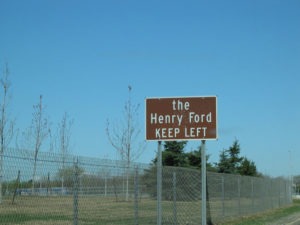January 29, 2017; Carroll County Times
We live in the Information Age, which Wikipedia defines as “a period in human history characterized by the shift from traditional industry that the Industrial Revolution brought through industrialization to an economy based on information computerization.” In 2010, 62 percent of Americans used the Internet as an integral part of their jobs; that number is only going up. This means different things to different people, but it presents a particular problem for historic preservationists: It creates a huge amount of recorded information about societies, people, and cultures that is in no way organized or preserved.
Contrary to many people’s assumptions, digital records are a fragile form of storage. Pages on the Internet are subject to link rot, domain changes, and other issues. But even information stored on physical drives isn’t safe. As the Atlantic explained:
Digital space is finite and expensive. Digitally stored data can become corrupted and decay as electrical charges used to encode information into binary bits leak out over time, altering the contents. And any enduring information could be lost if the software to access it becomes obsolete. Or a potent, well-timed coronal mass ejection could cause irreparable damage to electronic systems.
Not only is it subject to decay, but due to a rapid increase in technology, information can be hard to access. Floppy disks were ubiquitous 20 years ago, but how many modern computers can read one? What about VHS tapes? Many laptop computers don’t even have compact disc drives. This means that when historical information is stored in this format, libraries need to store the information source, the device needed to access it, and the knowledge to repair it—an expensive endeavor. The famous Voyager Golden Record, intended as a time capsule of our world, travels with its own cartridge, needle, and pictorial instructions for playing it. Including all this material for every data format in a library is impractical.
Nonprofit libraries and historical associations, whose mission is to preserve, collect, and interpret the stories of their communities, struggle with how to accurately maintain information as its formats evolve.
Sign up for our free newsletters
Subscribe to NPQ's newsletters to have our top stories delivered directly to your inbox.
By signing up, you agree to our privacy policy and terms of use, and to receive messages from NPQ and our partners.
Librarians at Harvard’s Widener Library have perhaps one of the best preservation systems available. Preservationists use technology to emulate the original software programs or mediums as closely as possible to preserve the original reading experience. A special reader whose information only flows one way (to prevent overriding) can extract not only the information but a copy of the source medium that replicates the structure and content of the storage device.
Of course, this kind of technology is both extremely expensive and time-consuming to use, so it’s not necessarily a practical solution for smaller libraries and historical societies. Gainor Davis, Executive Director of the Historical Society of Carroll County (Maryland), explained, “One of the greatest challenges for historians is how to document all aspects of a changing world in light of how they currently documented history.” That means the medium matters; it tells you something about the creator of the record. Davis also claims “these new forms fail to record the genesis of ideas. Reading an email document is not the same as reading Thomas Jefferson’s hand-written notes on the Declaration of Independence.”
Is this an argument for preservation in hard copy? A number of preservationists, including researchers at Harvard, are candid about the issue. “There’s no getting around the risk of catastrophic loss in our culture,” says Robert Darnton, the librarian emeritus at the Harvard University Library.
In fact, many studies show that people process information more thoughtfully, and retain it better, when reading from print; this has partly to do with physical memory of the object. A study from San Jose State University explained that “when people are trying to locate a particular piece of information they have read, they often can remember where in a printed book they came across it…Paging back through a text to find a particular passage remembered by its location is the cognitive equivalent of retracing one’s steps through a forest, searching for familiar landmarks along the way.”
As the world continues to digitize and technology evolves, it will be a challenge for historic preservationists to determine what is worth saving and how to save it. The responsibility to a community as curator of its story is a heavy one, particularly for marginalized communities whose pre-digital written records may be sparse. But as new challenges arrive, so do new innovations—it’s just a question of how we want to tell our story.—Erin Rubin













